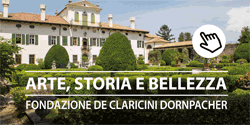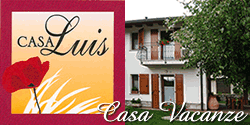Home / WHAT TO SEE /Longobard Temple
Longobard Temple
From the public square of the Dome, after a short walk through one of the parts more evocative of Cividale, one can reach the Tempietto Longobardo, monument of great prestige in virtue of the exceptional works of art guarded in it, for many people the same name of the city ideally is identified with the one of the Tempietto Longobardo.
Nevertheless still driven in it is the mystery that encircles the small building. Ignote is the original destination, the primitive structure and the maestranze that worked to build it. The same name of " Tempietto Longobardo " is improper, as tempietto is not a longobard word and the name "longobardo" dates back to the age of its construction, not to the fact that its craftsmen belonged to that artistic world. Improper, on the other hand, it is also the title of " oratory of Saint Maria in Valley ", acquired when the building became the fulcrum of the Benedictine convent of Saint Maria in Valley.
Instead, the construction and decoration in stucco and to coolness were surely executed little after the half of VIII the century, towards the 760.
In the first years of XVIII century the Tempietto stopped from its function of nail head alive of the monastero and therefore was used as capitolar room of the same convent; at the end of the 1800's the nouns donated the Tempietto to the community of Cividale (1893)and in such occasion they constructed the hanging passage, on the bed of the Natisone, than still take from the piazzetta of S. Biagio to the entrance of the building, so that the visitors in order to access to it were not obliged to pass through clausura atmospheres.
During the centuries the Tempietto was "restructured" several times: all the frescoes decorating (or that have decorated as many of them have been recently moved and exposed in the Christian Museum and the archaeological Museum) the walls are proof of this remake: all the frescoes date from the XI to the end of XIV century approximately. The building has a central body (externally to square plant, weak cross to the inside) and of the presbiterio to three apses, the widest being the central one. The time is to cruise in the classroom, to botte in the absidiole. Monolitic architraves of Roman ages supported by twin columns of perusal with corinthian capitels separate the navatelle, while a iconostasi with smooth plutei delimits the zone of the classroom from the presbiterio. On the wall next to the entrance (the western one) one can admire the original decorations of the Tempietto:in fact they are in good state of conservation the exceptional and famous putties and some frescoes unfortunately abraded and therefore hardly readable, however still a masterpiece.
The decoration of stucco (compound of chalk, lime and powder of marble) is carried out on two registries. In those advanced two horizontal bands, worked with reason to stilizzate deeply recorded rosettes, with cavity to the center once filled up with vitrea paste (only in some visible), Coro Ligneo fine XIV secolodelimit a space in which the six Saints in high relief find place leaned to the wall, placed side by side in ternary groups, to the right and to the left of one she monopierces blind person, she adorns of an archivolt, anch' it in stucco with most fine reason similar to one trina, resting on two columns sormontate from capitelli corinzi. In the inferior registry one mirabile wraps worked to day runs with decorativa function around the lunetta of the Christ Logos in frescoes. Main element of the ornament is a beautiful tralcio of screw to spiral with clusters and the vine leaves enclosed within double final frame with edges to ova and sferette of green glass (in the greater part not more existing) to the center. In the last restorations they have been recovered ulterior stucco fragments, that has given credibility to the hypothesis, already formulated long time ago, than a decoration similar to that one of the income wall it must be had also in adjacent the northerner and meridional. The six feminine statues have been thought figures of saints and four of them have been identified as martyrs: Chiona, Irene, Agape and Sofia. Their identification, however,is not sure. The elegant figures, strongly lengthened and sluices within garments made precious by various decoratives elements and each of them has a solemn ieraticità and although they recall to the memory theories of own saints of the musivo bizantin world , they differ from those because of visible realism in also stilizzata modellazione and for the new characterization of the faces. .
As far as the dating, there is not doubt that all the decorations in stucco belong to the same age in which the Tempietto was constructed, hardly beyond the half of century VIII. The original frescoes dates to the 760 approximately, are reduced to little episodes: the Christ Logos between the Archangels Michele and Gabriel and some martyrdoms (rests of a theory that ran at least in three walls) in the income wall, and a Sant' Adrian in that northerner: common and peculiar elements in all are the fixity of the positions, the espressionistici sections of the faces, the lands use greens in order to create chiaroscurali effects.
OPENING HOURS AND INFO:
MONASTERO DI SANTA MARIA IN VALLE e TEMPIETTO LONGOBARDO Via Monastero Maggiore, 34 – 33043 Cividale del Friuli ( UD) tel. biglietteria +39 (0)432 700867 tel. prenotazioni +39 (0)432 710460
www.tempiettolongobardo.it
www.monasterodisantamariainvalle.it






